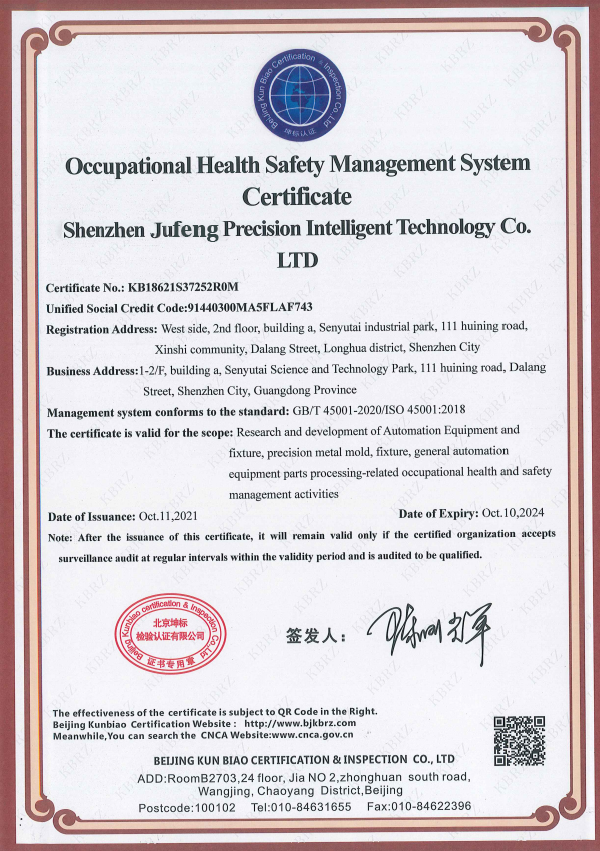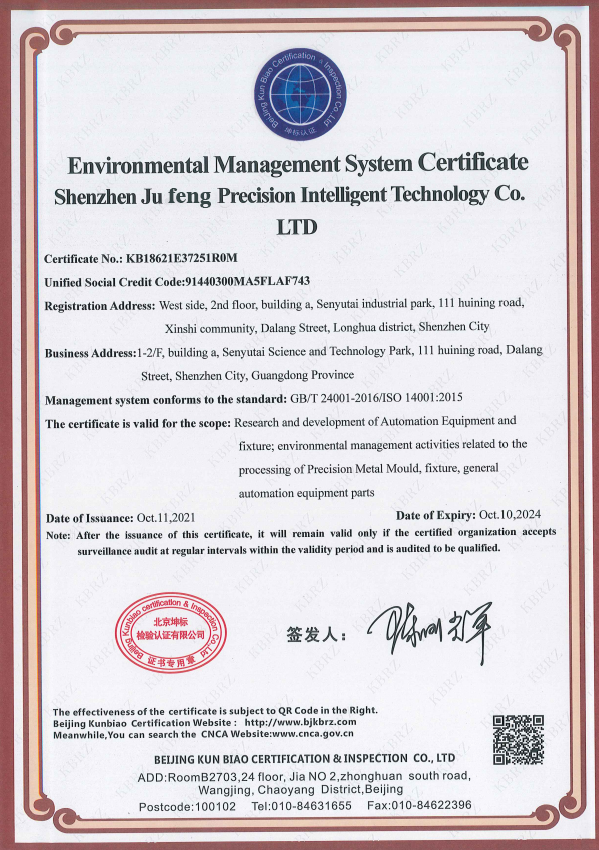News
Evaluating the Performance of Your Battery Assembly Press Fixtures: A Comprehensive Guide
Evaluating the Performance of Your Battery Assembly Press Fixtures
Table of Contents
- Understanding Battery Assembly Press Fixtures
- Importance of Evaluating Press Fixture Performance
- Key Factors Affecting Fixture Performance
- Performance Metrics for Battery Assembly Press Fixtures
- Methods for Evaluating Fixture Performance
- Troubleshooting Common Fixture Issues
- Best Practices for Optimizing Fixture Performance
- Future Trends in Battery Assembly Press Fixtures
- Conclusion
- Frequently Asked Questions
Understanding Battery Assembly Press Fixtures
Battery assembly press fixtures play a crucial role in the manufacturing process of batteries, particularly in the assembly of components like electrodes, separators, and electrolyte cells. These fixtures ensure precision and consistency, which are vital for battery performance and longevity. In this article, we delve into the evaluation of these fixtures, exploring how to assess their performance effectively and improve overall production quality.
Importance of Evaluating Press Fixture Performance
Evaluating the performance of your battery assembly press fixtures is essential for several reasons. First, it directly impacts the quality of the final product. Poorly performing fixtures can lead to misalignment, excessive wear, and ultimately, a decrease in battery efficiency. Second, regular performance evaluations can help identify potential issues before they escalate into costly production downtime. Lastly, understanding fixture performance supports continuous improvement initiatives, allowing manufacturers to adapt to changing industry standards and technological advances.
Key Factors Affecting Fixture Performance
Several key factors influence the performance of battery assembly press fixtures:
1. Material Selection
The choice of materials used in the construction of fixtures significantly affects durability and precision. High-quality materials can withstand the stresses of the assembly process, leading to longer fixture life and better performance.
2. Design Accuracy
The design of the fixture must align perfectly with the components involved in the battery assembly process. Accurate designs reduce the risk of misalignment and ensure that all parts are assembled correctly.
3. Maintenance Practices
Regular maintenance and inspection of fixtures are crucial for sustaining their performance. Neglecting maintenance can lead to wear and tear, affecting the overall efficiency of the assembly process.
4. Operational Environment
The environment in which fixtures operate can influence their performance. Factors such as temperature, humidity, and exposure to contaminants can impact the functionality and lifespan of the fixtures.
Performance Metrics for Battery Assembly Press Fixtures
To effectively evaluate the performance of battery assembly press fixtures, specific metrics should be monitored:
1. Cycle Time
Cycle time measures the duration it takes to complete one full assembly process. Shorter cycle times often indicate more efficient fixtures.
2. Alignment Accuracy
Ensuring that components are aligned correctly is crucial for battery performance. Measuring alignment accuracy provides insights into fixture effectiveness.
3. Component Integrity
Assessing the integrity of components post-assembly helps gauge the impact of the fixture on product quality. Any defects should be logged and analyzed.
4. Production Throughput
Production throughput refers to the total number of components assembled in a given timeframe. Higher throughput indicates better fixture performance and efficiency.
5. Maintenance Frequency
Tracking how often fixtures require maintenance can help identify trends and potential issues. This metric is essential for proactive management of fixture performance.
Methods for Evaluating Fixture Performance
Evaluating the performance of battery assembly press fixtures can be accomplished through various methods:
1. Visual Inspections
Conducting regular visual inspections allows operators to identify visible signs of wear, misalignment, or damage. This method is straightforward and can be performed frequently.
2. Performance Testing
Implementing performance tests can provide quantitative data on fixture efficiency. These tests can simulate assembly processes to evaluate cycle times, alignment, and component integrity.
3. Data Analysis
Utilizing data analytics tools can help manufacturers track performance metrics over time. Analyzing this data can uncover patterns and assist in making informed decisions about fixture improvements.
4. Feedback from Operators
Gathering feedback from operators who work directly with the fixtures can yield valuable insights. Their hands-on experience can highlight practical issues that may not be evident through quantitative analysis.
5. Benchmarking
Comparing fixture performance against industry standards or competitors can help identify areas for improvement and establish goals for performance enhancement.
Troubleshooting Common Fixture Issues
When performance evaluations reveal issues with battery assembly press fixtures, troubleshooting becomes essential. Common problems include:
1. Misalignment
Misalignment can lead to significant assembly errors. Regular calibration and adjustments are necessary to ensure fixtures maintain precision.
2. Excessive Wear
Fixtures may experience excessive wear due to poor material selection or inadequate maintenance. Implementing a robust maintenance schedule can mitigate this issue.
3. Inconsistent Cycle Times
Inconsistent cycle times may indicate underlying problems with the fixture or the assembly process. Identifying the root cause is crucial for rectifying this issue.
4. Component Defects
If defects are frequently observed in assembled components, a thorough evaluation of the fixture’s design and operation must be conducted to determine the cause.
Best Practices for Optimizing Fixture Performance
To ensure optimal performance of battery assembly press fixtures, manufacturers should consider the following best practices:
1. Regular Maintenance
Establish a preventive maintenance schedule to ensure fixtures are regularly inspected, cleaned, and repaired as necessary.
2. Employ Quality Materials
Invest in high-quality materials for fixture construction to enhance durability and performance.
3. Continuous Training
Provide ongoing training for operators to ensure they are aware of the best practices for using and maintaining fixtures.
4. Implement Automation
Where possible, incorporate automation into the assembly process to reduce human error and increase efficiency.
5. Foster a Culture of Improvement
Encourage a workplace culture that values continuous improvement. Solicit feedback from employees and implement changes based on their insights.
Future Trends in Battery Assembly Press Fixtures
As technology evolves, so too does the landscape of battery assembly press fixtures. Key trends to watch include:
1. Integration of Smart Technologies
The rise of IoT (Internet of Things) technologies will enable smarter fixtures that can provide real-time performance data and predictive maintenance alerts.
2. Advanced Materials
Research into new materials, including composites and lightweight alloys, may lead to more durable and efficient fixtures.
3. Sustainability Initiatives
With growing concerns about sustainability, manufacturers are likely to focus on eco-friendly materials and processes in fixture design and operation.
4. Customization
The demand for customized fixtures tailored to specific assembly processes is expected to grow, allowing manufacturers to achieve greater precision and efficiency.
Conclusion
Evaluating the performance of battery assembly press fixtures is crucial for ensuring the quality and efficiency of battery production. By understanding the key factors that affect performance, utilizing effective evaluation methods, and implementing best practices, manufacturers can significantly enhance their assembly processes. Staying ahead of industry trends will further empower manufacturers to optimize their operations, ultimately leading to improved product quality and customer satisfaction.
Frequently Asked Questions
1. What are battery assembly press fixtures?
Battery assembly press fixtures are specialized tools used in the manufacturing of batteries, ensuring precise alignment and assembly of components.
2. Why is it important to evaluate fixture performance?
Evaluating fixture performance helps identify issues early, improves product quality, and enhances overall production efficiency.
3. What metrics should I track when evaluating press fixtures?
Key metrics include cycle time, alignment accuracy, component integrity, production throughput, and maintenance frequency.
4. How often should I perform maintenance on my fixtures?
Regular maintenance should be performed according to a predetermined schedule, often recommended to be quarterly or as needed based on usage.
5. What are some common issues with battery assembly press fixtures?
Common issues include misalignment, excessive wear, inconsistent cycle times, and defects in assembled components.




